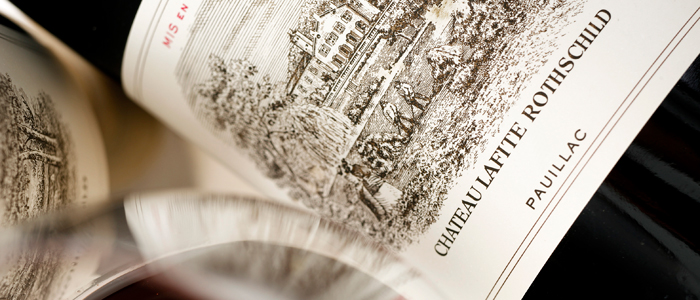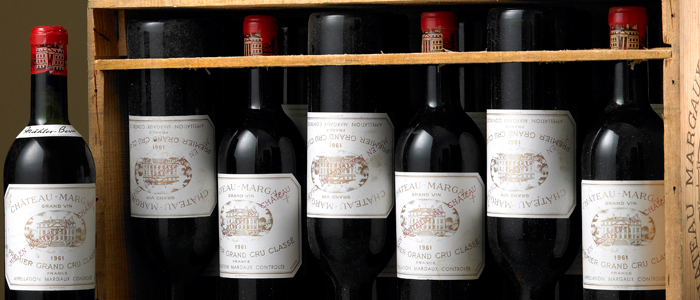First Growths – are they worth it?
Author: Berry Bros. & Rudd
In 1855 the wines of the left bank were “classified” on the orders of Napoleon III (who, incidentally spent some time in BBR’s St James’s cellars during his exile in the 1830s). This new classification was designed for the Exposition Universelle de Paris, at which the wines would be on display. The wines were ranked by the brokers of the time, with rankings largely based on the wines’ selling prices at the time and the reputations of the various châteaux.
There has been one major change to the classification since (minor changes being the addition of Cantemerle in 1856, and the incorporation of Ch. Dubignon into Malescot St Exupery in the 1870s) when in 1973 Mouton-Rothschild was “upgraded” to first from second growth status. Those who believe that Mouton should have stayed a second would say that this upgrade was all about politics and strong lobbying from the powerful Phillippe de Rothschild; fans of the château will point to the fact that Mouton was under english ownership when the original classification was made – more than reason enough for it to miss the cut first time round…
In the world of fine wine the first growths are still very much the aristocracy; the best. Petrus & Le Pin may sell for more money, though this is largely down to a lack of supply, and Ausone may get the Parker points, but in terms of brand the first growths have it. These are the vinous Rolls Royces.
So how much are they worth? And are they worth it at seemingly ever-increasing prices?
In 1983 a case of 1982 Lafite would set you back in the region of £450; the same case today would set you back around £20,000. The best wines do seem to appreciate in value. The “is it worth it?” question is twofold and needs two answers. The first answer is a simple “yes”: a case of 82 Lafite is worth twenty thousand pounds because someone will pay twenty thousand pounds for it. The second answer is more tricky, because the question is: “is there twenty thousand pounds’ worth of pleasure in a case of 82 Lafite or, more simply, is there two thousand pounds’ worth (with the additional bit for the taxman) of pleasure in a bottle of 82 Lafite?
My answer to this again is a definite yes. It’s not just about the experience of tasting the very best, about an experience that is nigh on impossible to match or replicate, though these do play a part. For me, it’s a meeting. A meeting with Lafite, a meeting with the vineyards, a meeting with the sunshine of 1982 and a meeting with the harvesters, the grapes, the barrels, the chais and with Bordeaux. A meeting with whoever you’re sharing the bottle with and a meeting with whoever else has tasted the wine – from the winemaker as he made it to the banker drinking it at the next table . A meeting with ones maker, who is ultimately the creator of what’s in your glass.
I’ve read many discussions as to the true definition of “fine wine”. My answer is that a fine wine is a wine that will provoke thought or conversation other than a simple “that’s ok” or “yup, goes well with the lamb”. A step up is truly fine wine – the icons, and I have been lucky enough to taste and drink bottles that have not only provoked thought or conversation, they have provoked emotion. Barrel samples of both Le Musigny, Mugnier and Ch. Margaux 2005 overwhelmed me: what moved me was that an experience so beautiful could come from vines, soil, sunshine and some finishing from man. Epiphany isn’t quite the right word; I prefer theophany: a divine disclosure. Which seems like a good deal for a couple of thousand pounds.





[…] January 1, 2010 by jossnotjosh There are five first growths: Lafite, Mouton, Latour, Margaux and Haut-Brion. Read: Rolls-Royce, Bentley, Ferrari, Lamborghini & Porsche. Maybe not in that order: it’s about status, class and pedigree. These wines are the best, and they (the chateaux) have established themselves as such. And they cost a few quid. Here’s something I prepared earlier on whether or not they are worth it. […]